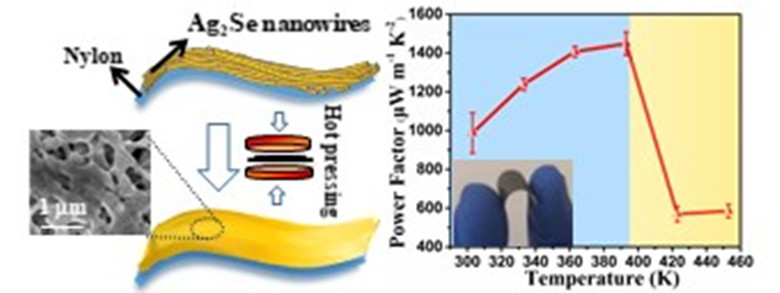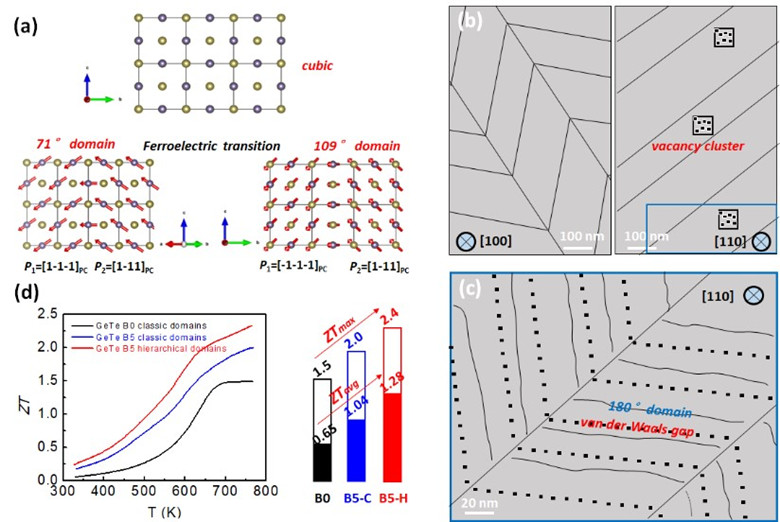Researchers make breakthrough in magnetic geometry-induced quantum geometry and nonlinear transport
2025-06-06SUSTech hosts IOP Forum with President of Institute of Physics Sir Keith Burnett
2025-03-26Researchers discover unusual thermal conductivity in high-symmetry single crystals
2025-03-26New efficient method detects quantum temporal correlations
2025-03-26Researchers explore unconventional magnons predicted by spin space groups
2025-03-25Thermoelectric materials are among the important potential candidates for alternative and complementary sources for energy, wherein heat can be directly converted into electrical energy and vice versa. These materials are realistic operational materials for applications in thermoelectric generators and refrigerators. Recent studies have started examining their efficiency in smaller, flexible devices, in hope of revolutionizing the thermoelectric power generation field.
Researchers at the Department of Physics have had three papers published in top journals covering their recent research on thermoelectric power. The research group, led by Professor Jiaqing He, was published in Journals of Materials Chemistry A, Nature Communications and Advanced Functional Materials for their papers dealing with different aspects of thermoelectric materials. They are working to minimize thermal conductivity while retaining the desirable electronic transport properties.
Thermoelectric power researchers have examined many different ways to improve thermoelectric material performance. Some have introduced nanostructures into the matrix, resulting in thermal conductivity in the material structure through the vibration of atoms. Researchers have also proposed a variety of synthetic techniques to insert these nanostructures; such as fabricating superlattices or quantum dots, nanocrystalline inclusions, and self-organization.
The paper in Journals of Materials Chemistry A was titled “Achieving a fine balance between the strong mechanical and high thermoelectric properties of n-type PbTe–3% Sb materials by alloying with PbS.” This paper examined alloying lead telluride (PbTe) with lead sulfide (PbS). While PbTe has become a critical component of thermoelectric power generation, it is a very soft compound, making it weak and ineffective.

By alloying PbTe with PbS, the new alloy became more than 60% harder, while only losing 7.4% of its thermoelectrical property. The research team found that this approach ensures that the alloy sets a new standard for thermoelectrical power generation that is hard enough without sacrificing efficiency.
The Nature Communications paper was titled “High performance n-type Ag2Se film on nylon membrane for flexible thermoelectric power generator.” With a significant amount of research around flexible thermoelectric materials focusing on organic chemicals or organic chemical composites, the research team investigated a silver-selenium (Ag2Se) film on a flexible nylon membrane.

They believed that this would create a device with an extremely high power factor and excellent flexibility. This turned out to be correct on both counts, particularly with silver-selenium grains embedded into the film. The flexibility saw their pilot device retain 93% of its original electrical conductivity after 1000 bending cycles with an ultrahigh power factor approach 1 mWh at 300 K. A prototype device that featured four thermoelectric films generated 18 mV and 460 nW, at a temperature difference of 30 K. This outstanding achievement opens the door to finding high performing thermoelectric films for flexible devices.
The final paper, published in Advanced Functional Materials, was titled “High Thermoelectric Performance Achieved in GeTe–Bi2Te3 Pseudo‐Binary via Van der Waals Gap‐Induced Hierarchical Ferroelectric Domain Structure.” The research team investigated both germanium-telluride and bismuth-telluride alloys, to test for Van der Waals gaps. The Van der Waals gap is the distance-dependent interaction between atoms or molecules.

The research team found that by alloying germanium-telluride (GeTe) and bismuth-telluride (Bi2Te3), the internal microstructure would result in heat-treated Van der Waals gaps. This would then evolve into positively charged van der Waals gaps that further induce nano-scale ferroelectric domains. Such a structure is unique and is beneficial for optimizing thermoelectric properties, in that it reduces the thermal conductivity of the lattice.
These three research papers combine to show the enormous potential for future research into thermoelectric materials. The research team worked with Associate Professor Xie Lin and former Associate Professor Wu Di, who has since become a Professor of Physics at Shaanxi Normal University.
The development and completion of these works have been strongly supported by the National Natural Science Foundation of China, the Guangdong Natural Science Foundation, and the Peacock Team of Shenzhen City.
Advanced Functional Materials Paper: https://doi.org/10.1002/adfm.201806613
Nature Communications Paper: https://doi.org/10.1038/s41467-019-08835-5
Journal of Materials Chemistry A Paper: https://doi.org/10.1039/C9TA00400A
He Jiaqing Research Team Home Page: http://jqhphy.sustc.edu.cn